Tsukiji Market
After going around Tsukiji Fish and Seafood Market, I was able to say “No wonder Japan is a foodie’s paradise! It has a stable supply of top-notch ingredients to the people who take quality so seriously!”.
Although this market has the sight, smell and sound of a typical marketplace, this is the “world’s largest wholesale fish and seafood market” where such a wide range of edible bounties of nature meet wide-scale trade transactions.
It is fascinating to know the historic nature of this market…and how it has been remarkably run for centuries, from the time Tokugawa Ieyashu commissioned some fishermen to supply seafood for the Edo castle in the 17th century thus developing the Nihonbashi bridge into a fish quay where all the products not bought by the castle were sold… to being transferred to its present location after the Nihonbashi Fish Market was destroyed in the Great Kanto Earthquake in 1923…to what it has become now. Tsukiji Fish and Seafood Market officially opened in 1935 sitting on an exceptionally huge 56-acre reclaimed land in Tokyo Bay. The reclamation of Tokyo Bay after Tokyo was greatly devastated by the Meireki-no-taika fire of 1657 was among the other remarkable things that Tokugawa Ieyashu had done in pursuit of long-term values.
Each day, the exciting chaos begins as soon as the market opens. Tens of thousands of wholesalers, sushi chefs, fishermen, distributors, restaurant owners, market employees, consumers, and tourists converge as over 2,000 tons of 480 kinds of marine species and over 1,000 tons of 380 kinds of fresh fruits and vegetables from all over Japan and 60 other countries go through auctions and other transactions in its over 1,600 market stalls. Behind all these are more than 60,000 workforce that work tirelessly to keep such a huge operation running.
Fish and seafood are basic elements of Japanese cuisine and the fishing industry is a large sector of the Japanese economy. Hence with a staggering annual sales of 700,000 tons of seafood worth almost 6 billion US dollars, Tsukiji Market is a critical institution in its society.
Since time immemorial, mankind subsisted by hunting, fishing and gathering plants…and the modes of subsistence were ascribed to ecological and environmental variables. A huge fraction of the human race lived as hunters and gatherers for centuries but for the Japanese, mammal hunting was not one of its subsistence sources.
Japan’s culinary roots had been mainly influenced by several factors. With its geography, having the fourth longest coastline in the world that stretches 29,751 kms, fishing was more than a livelihood…it had become an enduring and well-adapted way of life. Buddhism, having a huge influence on the Japanese way of life, prohibited animal slaughter and eating of meat for 1200 years. There was political influence too, with an emperor issuing a decree prohibiting the eating of meat in A.D. 675.
With each Japanese consuming around 154 pounds of fish annually, Japan has become one of the world’s largest consumers of fish, getting about 10 percent of the world’s catches.
Fish is highly nutritious, being rich in vitamin A, omega-3 fatty acids, high-value protein and other essential nutrients and minerals. The great combination of healthy diet and exercise like walking are keys to the Japanese’s long lifespan. According to the World Health Statistics 2014 report, Japanese women have the longest life expectancy in the world at 87 years and their men rank number eight with a life expectancy of 80. 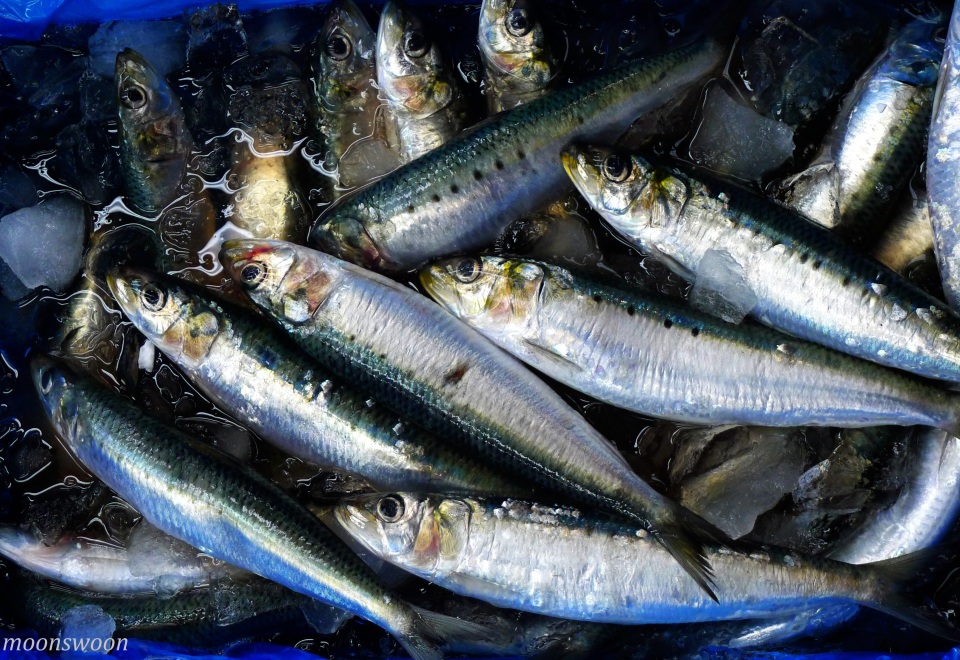
Tuna is one of those that stand out among the throngs of thousands of species underneath the deep blue sea. It’s one of the top five fastest swimmers, with the bluefin and yellowfin swimming at fast speed of 47mph or more. Of all the fish caught, tuna ranks number one in terms of value. Its annual landing amounts to $2.8 billion with a staggering $8 billion retail value.
There are more or less 40 species of tuna but the major species are bigeye, yellowfin, skipjack, albacore, and bluefin. Bluefin accounts only 5 percent of the total landings but it is the most valued and expensive. Around 80% of the bluefin caught all over the world go to Japan. In Tsukiji Market alone, around 3,000 pcs of frozen bluefin tuna are sold everyday.
Japan is the world’s largest market for tuna, consuming 25-30 percent of the world’s tuna catches. 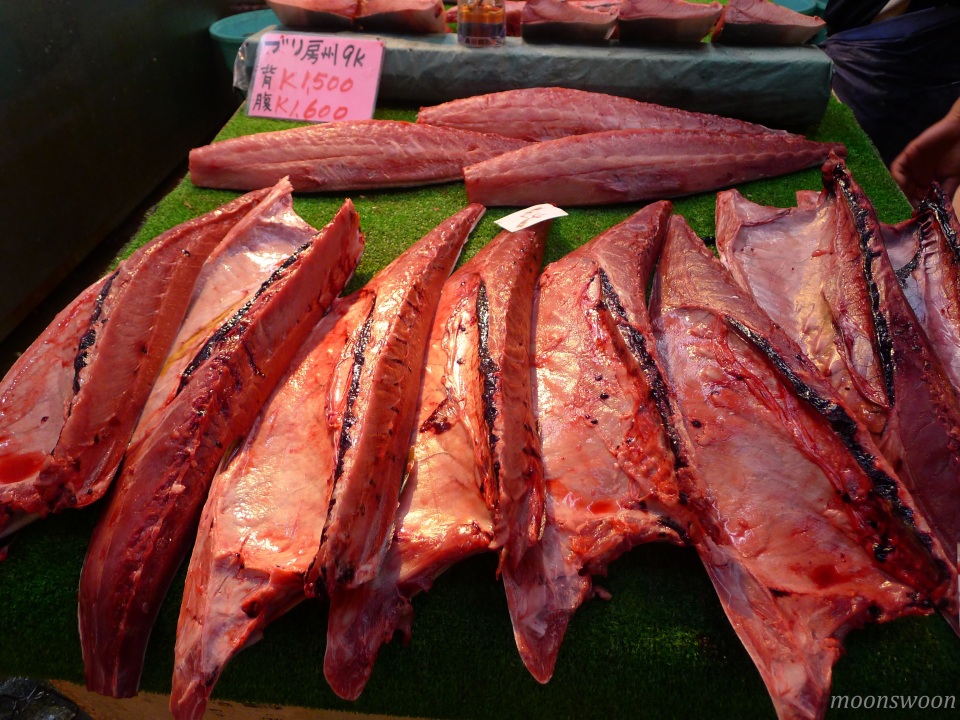
Such expertise in carving out the different cuts! 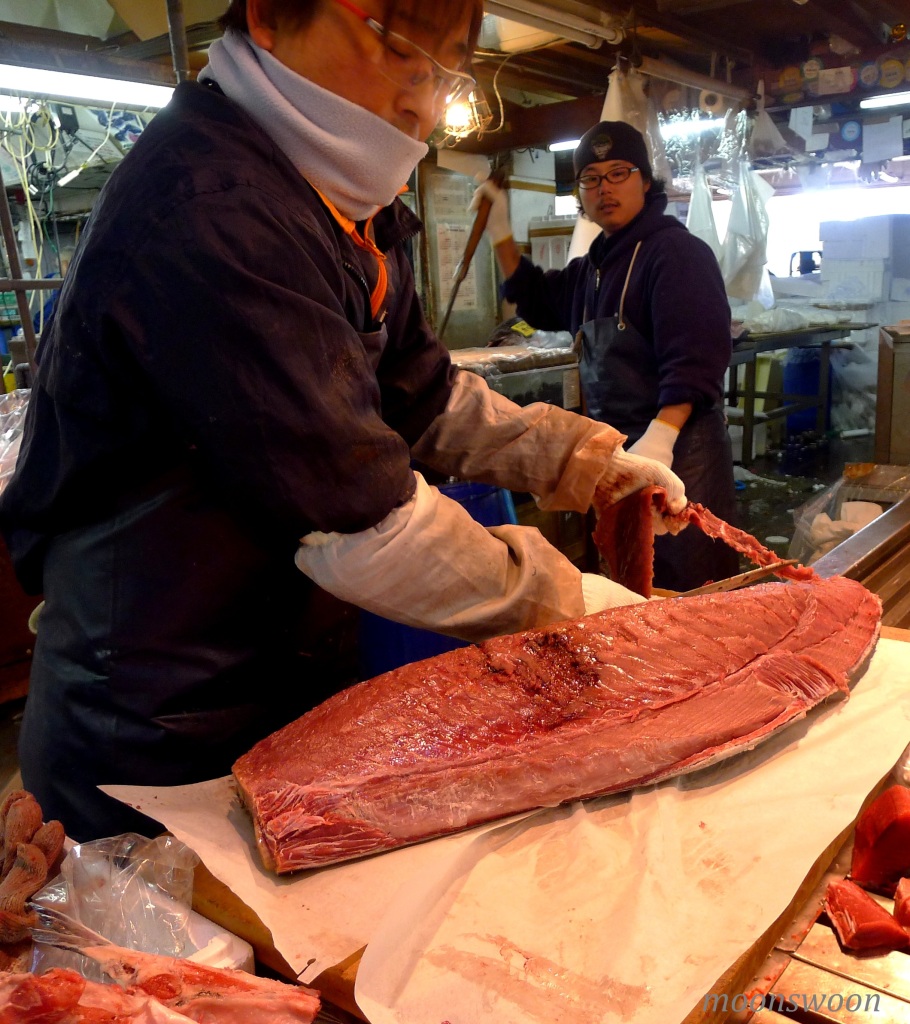
So tuna has a grading system, with grade 1 as the highest and grade 3 the poorest. Grade 1 can be perceived through the senses of sight – with a bright cherry-red flesh, smell – clean water smell, touch – should not be slimy. 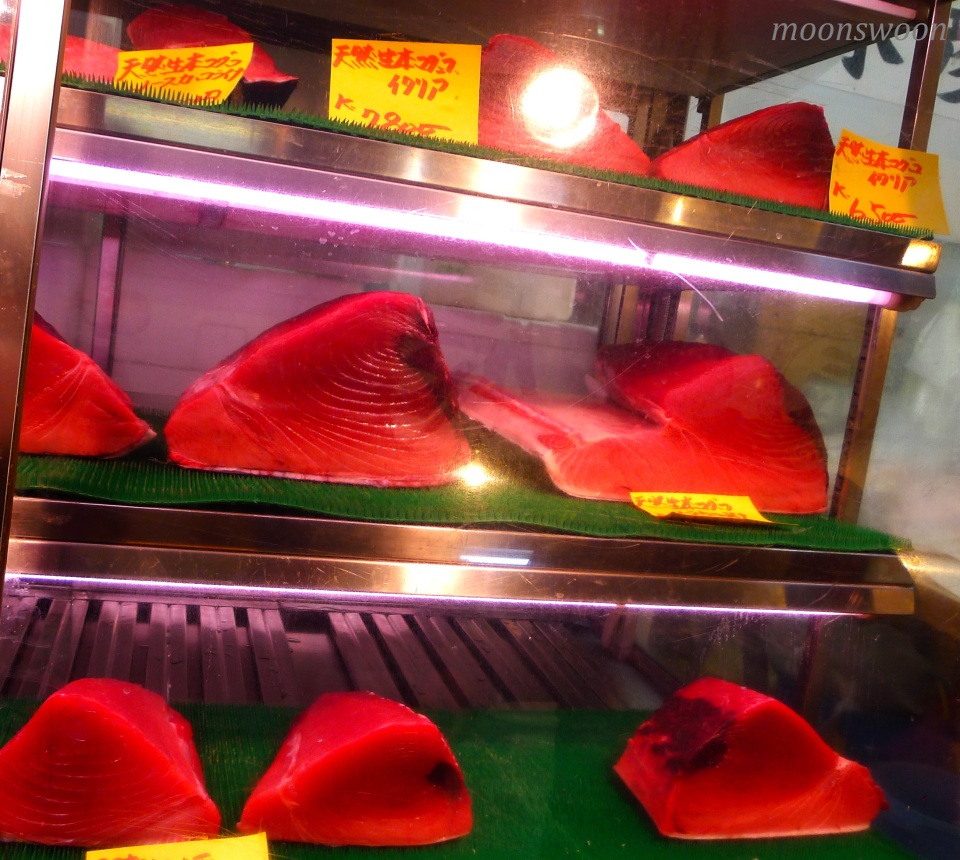
At 5:20 a.m., the ringing of a bell triggers that excitement associated with the start of the tuna bidding war where mid-level wholesalers and other licensed buyers bid intensely against one another. I didn’t witness the actual tuna auction but to be one of the 120 visitors allowed to watch it, you have to secure a ticket at Osakana Fukyu Center or Fish Information Center. 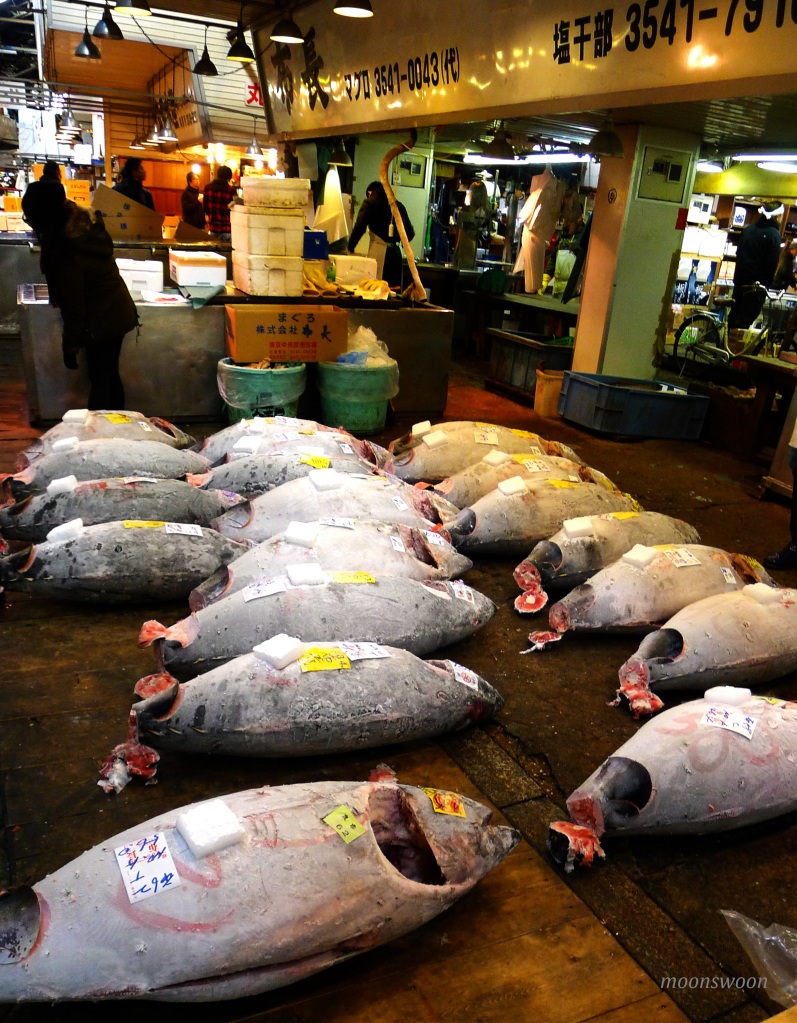
Please check out this site for more details:
http://www.japan-guide.com/e/e3021.html
Mountains cover around 75% of Japan’s 377,944 km² total land area. It has very limited plains and lowlands useful for cultivation but the climate was suited for farming. For Japan, agriculture has always been associated with rice farming, based on its arable land-use history. At around third century B.C., the Japanese were already growing rice in irrigated fields. It is their staple food but vegetables are also very important elements of Japanese cooking. Agriculture is also vital to Japan’s economy and society. Japan’s agricultural land is divided into two – rice fields which cover almost 40% and vegetable fields which cover almost 60%. Japan’s arable land, which is 13% of its total land area, is so small and is continuously shrinking due to housing and commercial expansion, the impact of climate change and labor deficiency due to ageing farmers and an urbanized population.
Some of the fruits and vegetables that end up in Japanese baskets are imported. Japan is the third biggest importer for agricultural products in the world. This illustrates a huge challenge to strengthen their food supply chain other than importation, with measures based to promote local products. This is an essential subsistence activity within this difficult environment.
In this era of industrial civilization, they have established an indoor farming method which would guarantee a steady supply of pesticide-free vegetables in any weather condition and improve their global competitiveness. This is a phase that will give rise to agriculture despite the extreme environmental pressure. Certainly, the shortage of arable land is in itself not a sufficient reason for a shortage of agricultural produce.
Traders flash hand signs for a vegetable auction.
The Japanese have sophisticated demands for fruits and vegetables. The colors and shapes or kata are extremely important for these reflect the quality of the product. 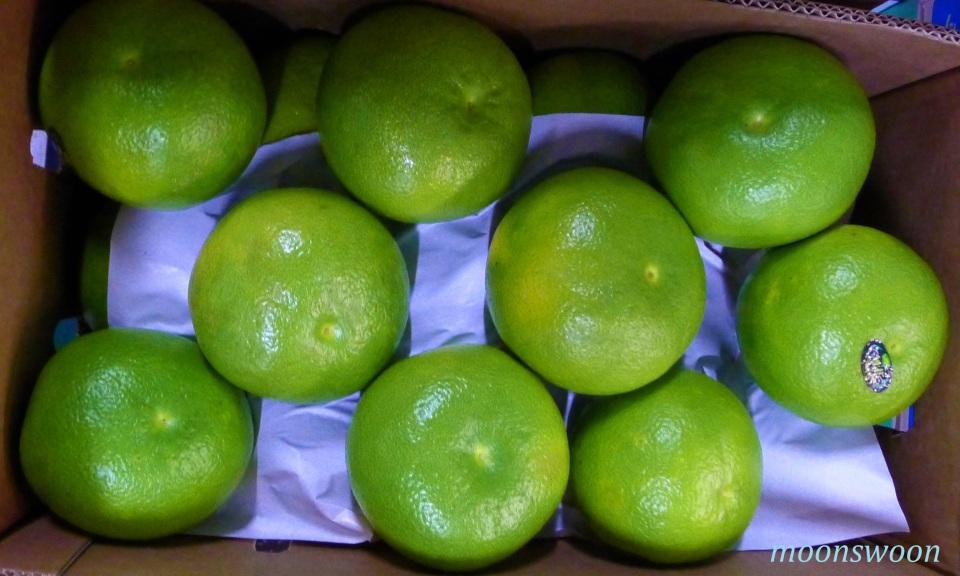
It’s the first time I’ve seen white strawberries! 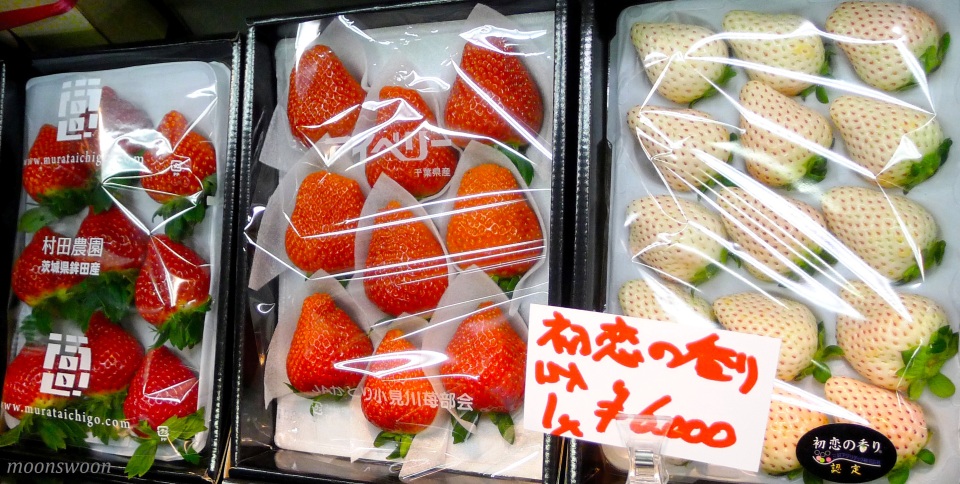
So this is what a fresh wasabi stem looks like! This rare, strong-flavored root is a member of the mustard, cabbage and horseradish family and has been grown in Japan since the tenth century. Wasabi was said to have attained much fame from the time it was declared by Tokugawa Ieyasu as a national treasure to its first commercial production during the Meiji period. Today, wasabi is not only served with sushi or sashimi…it is used in so many recipes and there’s a wide array of wasabi flavored goodies such as wasabi peanuts, cheesecake, barbecue sauce, snacks, chocolates, etc. 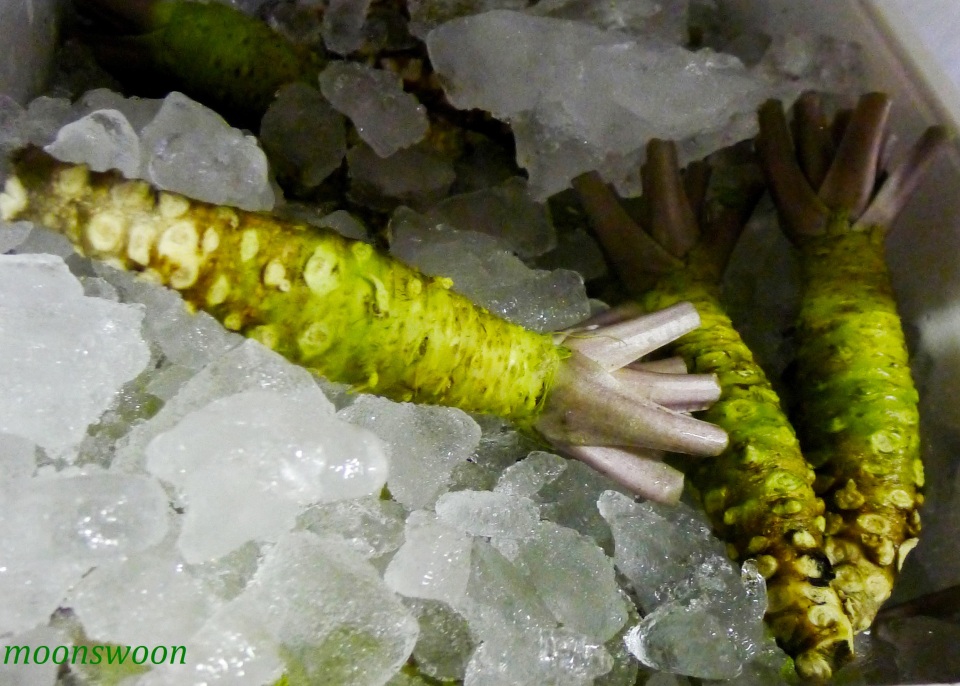
This market exposed me to a broad range of edible roots, leaves, fruits, seeds, bulbs, flowers, and stems that I didn’t know existed!
Negi, a big scallion that adds aroma, flavor and texture to some Japanese dishes like miso soup, ramen, yakitori, sukiyaki, etc.
It’s interesting to know that kabu or turnips, have been grown in Japan since the 7th century. It has around eighty varieties and each variety has its own level of crispness and sweetness. They can be eaten raw, made into pickles or used for stir-fries, soups, salads, etc.
Edamame or young green soybeans which have been used for centuries as an appetizer, a snack or used in soups and other Japanese dishes. 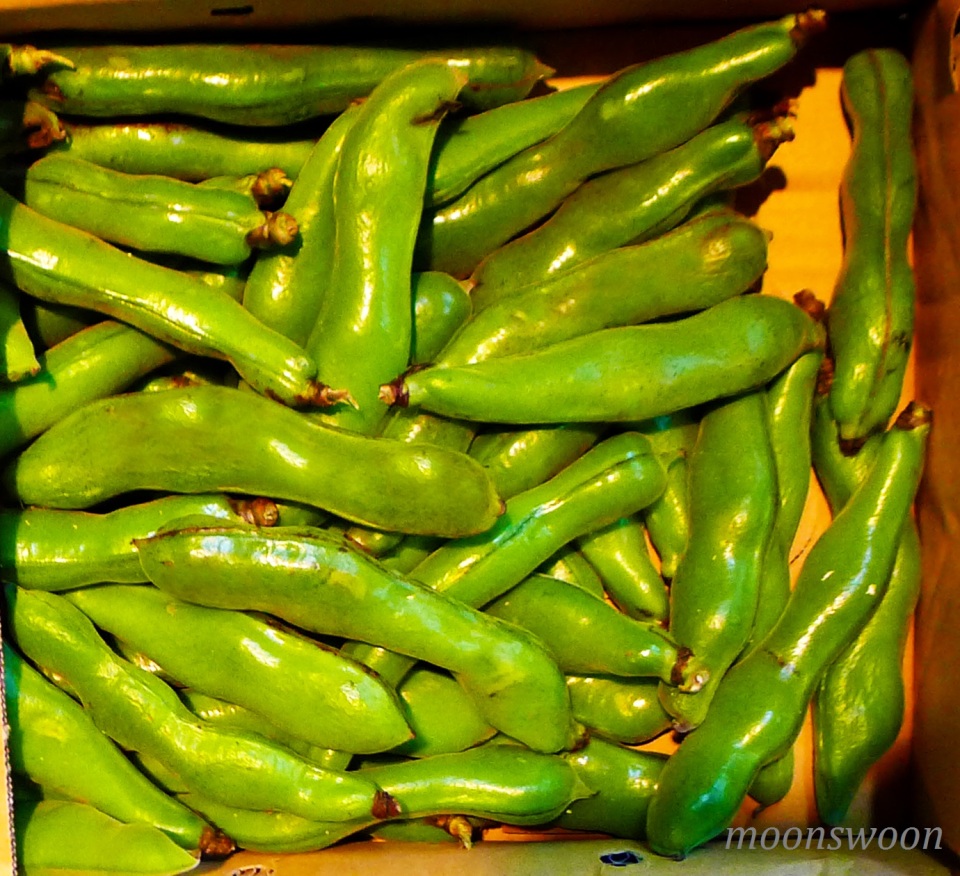
Tsukiji Market is divided into the Inner Market or Jonai Shijo and the Outer Market or Jogai Shijo.
The inner market is for wholesale customers and although it has restrictions as to access to visitors, there are tour guides that can bring you around the area. 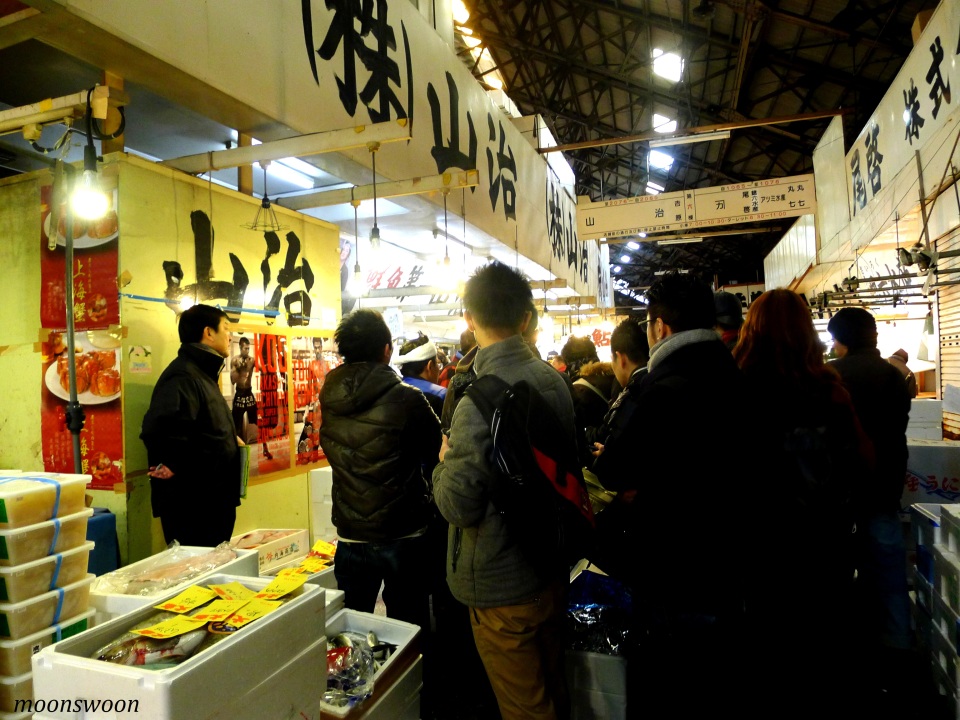
The Tsukiji Outer Market has a combination of wholesale/retail shops and restaurants. 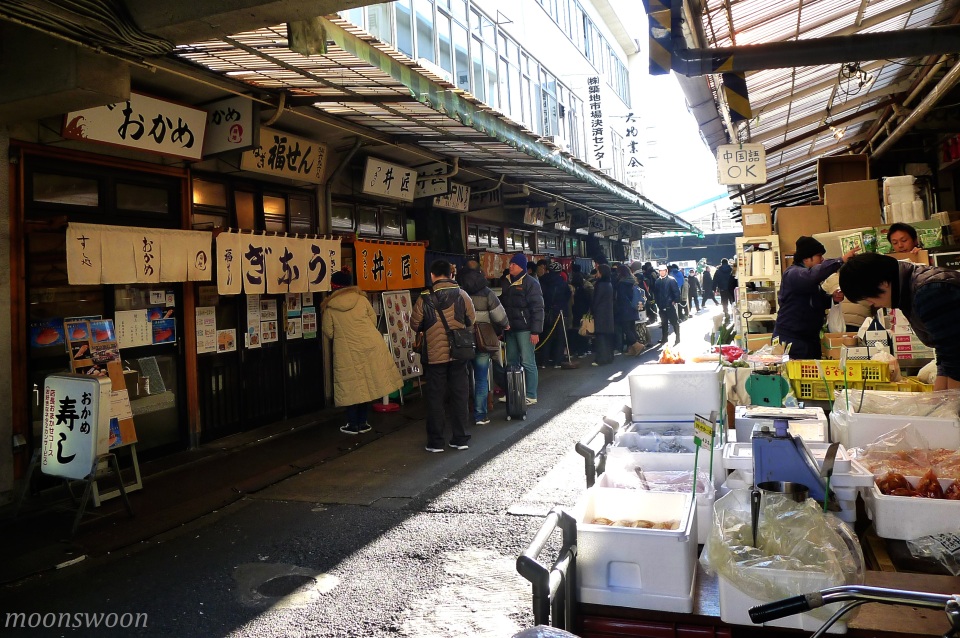
You should never leave Tsukiji Market without a taste of the freshest sushi in one of the sushi and fish restaurants that line the streets.
These turret trucks are among the 32,000 different types of vehicles used in transporting goods around the market. 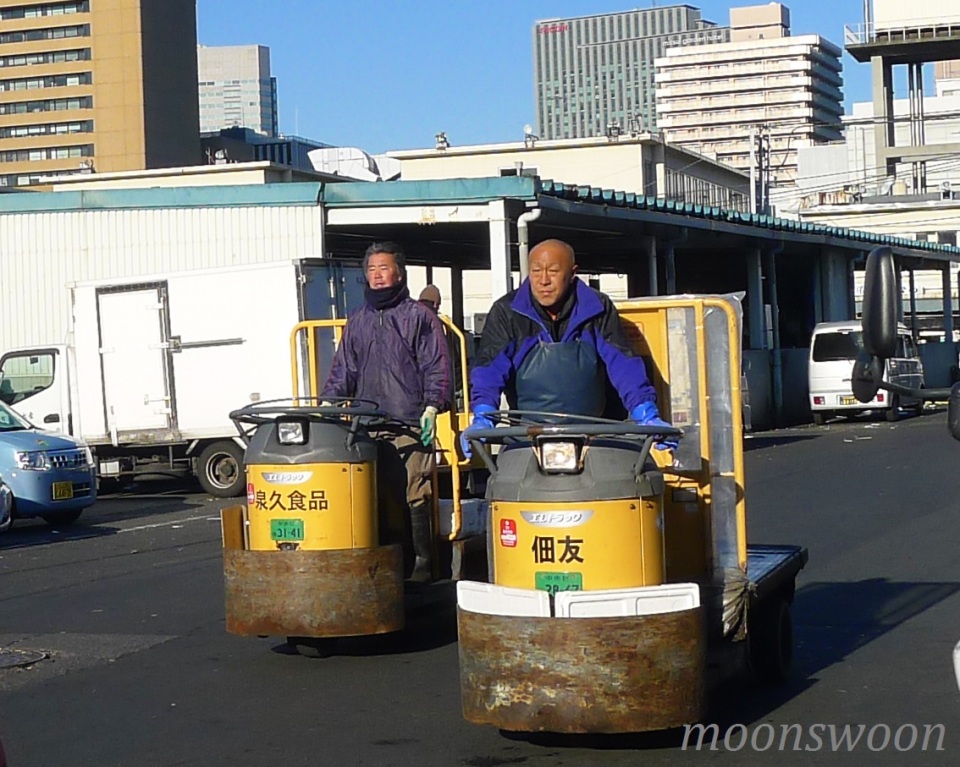
There are too many Japanese pickles to choose from! 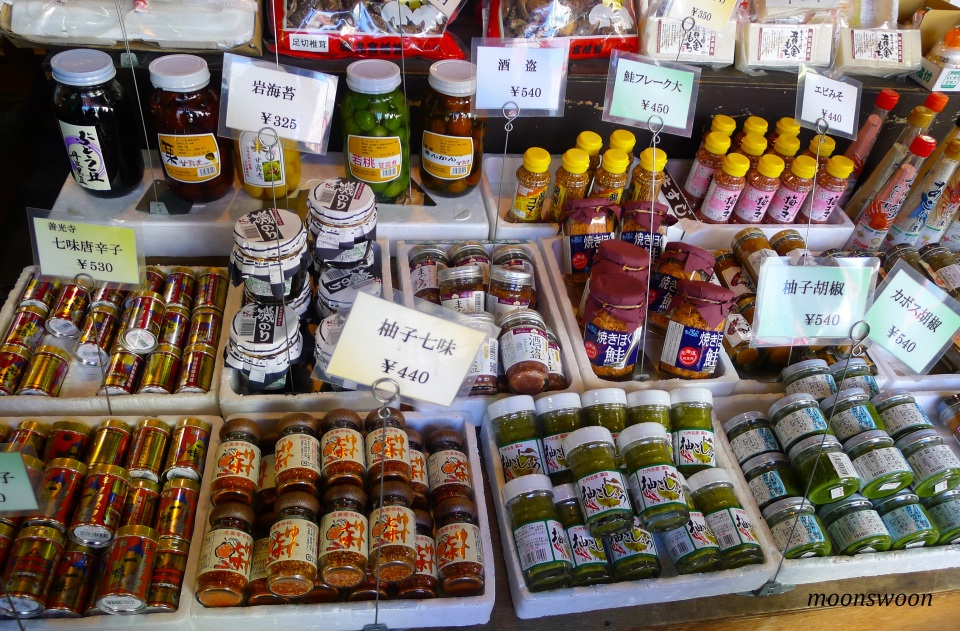
Tsukiji Market is scheduled to be moved to a new location in Toyosu in November 2016 to give way to new structures that will be built for the Tokyo 2020 olympics. 
Please check out this site to book or know more about the Tsukiji Market tour:
http://www.govoyagin.com/activities/private-tokyo-tsukiji-fish-market-tour-in-english/245
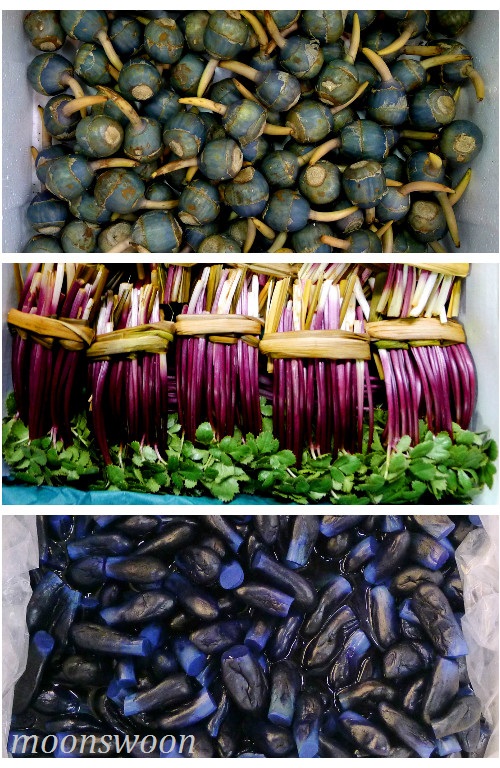
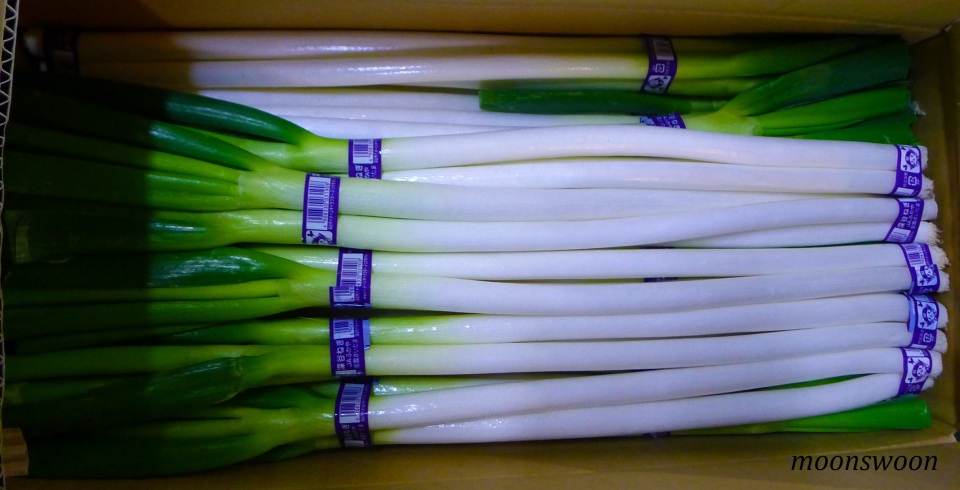
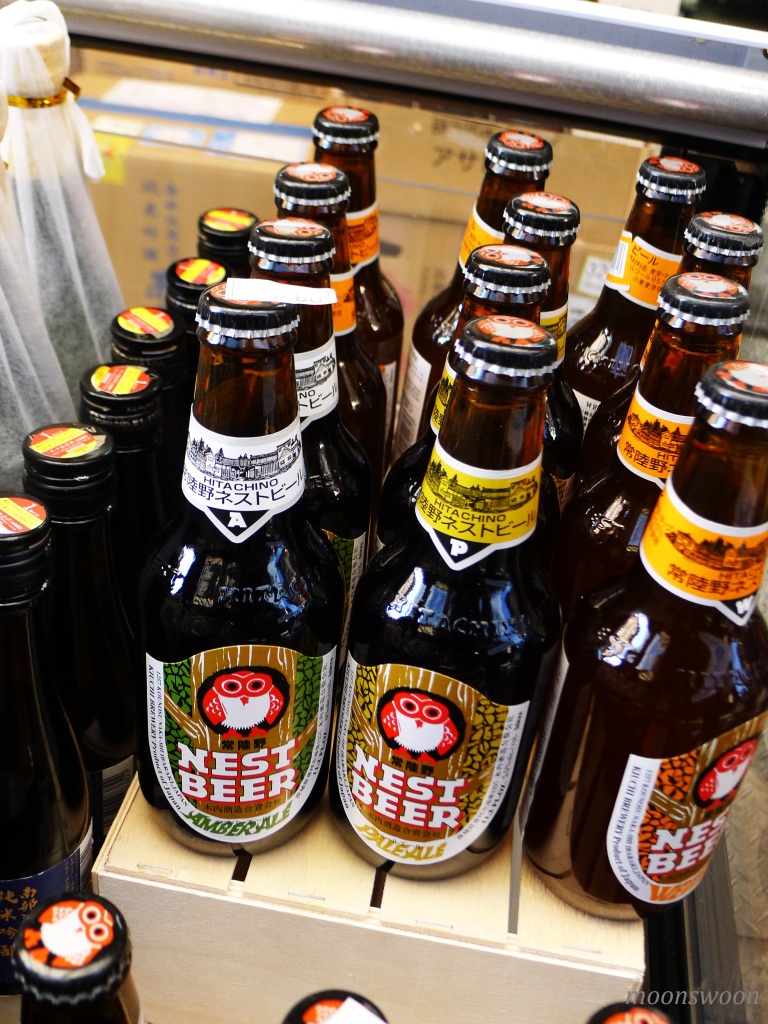
Fine photos to illustrate the text, in which you told an interesting story. Thanks for letting me travel vicariously! 🙂
You’re welcome! Our world is so vast and colorful! I’m glad I can share some of its wonder, complexity and multiformity. Thank you very much for appreciating!
I’m visiting Tokyo in October – can’t wait to see this market in real life! Thanks for the tip with the tour, too!
You’re welcome! Have a safe and pleasant journey to an amazing place! There are still other beautiful and historical places in Japan which I have not visited such as Kyoto, Osaka, Hiroshima, Nara, etc. There is even a rabbit island where there are so many large rabbits roaming around the island.
I thoroughly enjoy reading your posts. This one is a fascinating read. Thanks so much. Your wonderful photos give life to this particular tour. Thanks so much.
Thank you very much! I’m glad that my photos and descriptions were able to, at least, reflect the awesomeness of such an enormous network!
I felt like I was there and could hear the crowd and other public sounds!
Thank you very much! I was really overwhelmed not only with the variety of freshest seafood, fruits and vegetables…but also with the sheer volume of transactions, market mechanism, competitive auctions, the size of the market, the workforce, its history, and cultural significance.
Whoa!! That’s quite a place; it’s sort of a sightseeing tour in itself! If there is something they DON’T sell – I can’t imagine what it could be. Great pictures for your article.
It’s an amazing authentic old atmospheric market and yes, with its unparalleled mélange of food and non-food products, you’d wonder if there’s anything else they don’t sell. Thank you very much!
lovely post! and beautiful pictures! 🙂
xo, jade
https://ohjade.wordpress.com
Thank you very much! You also have an interesting site which makes me want to shop at a Viennese market and inspires me to make some yummy goodies like blueberry coconut cakes.
thank you so much 🙂
You’re welcome!
Thanks for dropping by http://wdfyfe.net/ You have a lot of cool stuff here. i love the photos
You’re welcome and thank you very much too!
WAW! This is a real food adventure! It is the first time I actually got to know a wasabi stern!
You can find lots of rare and exotic vegetables, fruits, and seafood here.
What a wonderful post! You serious sparked some major interest for me to visit Japan! I am sending you some seriously positive vibes for all the time and effort you put into this post.
I am sure that Japan’s colorful sprawl will amaze you. Its efficient railway system can easily bring you amid postmodernist structures and beautiful quiet places. Towards the end of March is the start of spring which you can enjoy the cherry blossoms. I can imagine the beautiful landscape with all those pink and white trees in full bloom as well as the autumn scene, from October to November, with the beauty of the colors of the changing leaves. Thank you very much for the appreciating my posts and the positive vibes!
I felt like I was right there with you! Great article and gorgeous photos!
I’m glad you like my post. It would have been better if I was able to witness the legendary tuna auction. I really appreciate your nice comment.
How exciting! I love the thought of tickets for the tuna auction – what a great sight that would be.
Oh yes, how interesting it would be to witness how the bidding drama was carried out.
Reblogged this on Ancien Hippie.
Thank you very much!
All looks so great!! I just hope all the tuna comes from sustainable sources!! 😉
Thanks a lot! The environmentalists are concerned that the worldwide consumption of tuna, especially bluefin, might lead to its depletion. Different countries have been using a sustainable fish farming method and Japan was the first one to establish the aquaculture cycle of a tuna. According to the Food and Agriculture Organization of the United Nations, “A stronger commitment to responsible aquaculture is needed. Not only producers, but also government authorities and general public, including consumers, are currently enhancing their awareness and knowledge of potential ecological impacts as well as of negative social and economic side-effects of a given aquaculture development. Experience has shown that improved coordination and management of development initiatives at sectoral, eco-regional and local levels can contribute to more environmentally sustainable development of aquaculture.”. Furthermore, an article from Aljazeera stated that Japan as well as the other major catchers of tuna like United States, Canada, Taiwan, and South Korea initiated to cut the allowable haul of immature bluefin tuna by at least 50 percent.
White Strawberries – that’s interesting. Anything which if off the regular is interesting huh? 😛
Yes, white strawberries and a whole lot more rare food finds! It’s exciting to explore the local food scene and a surprise delight to find a variety of rare and exotic food! Thank you very much!